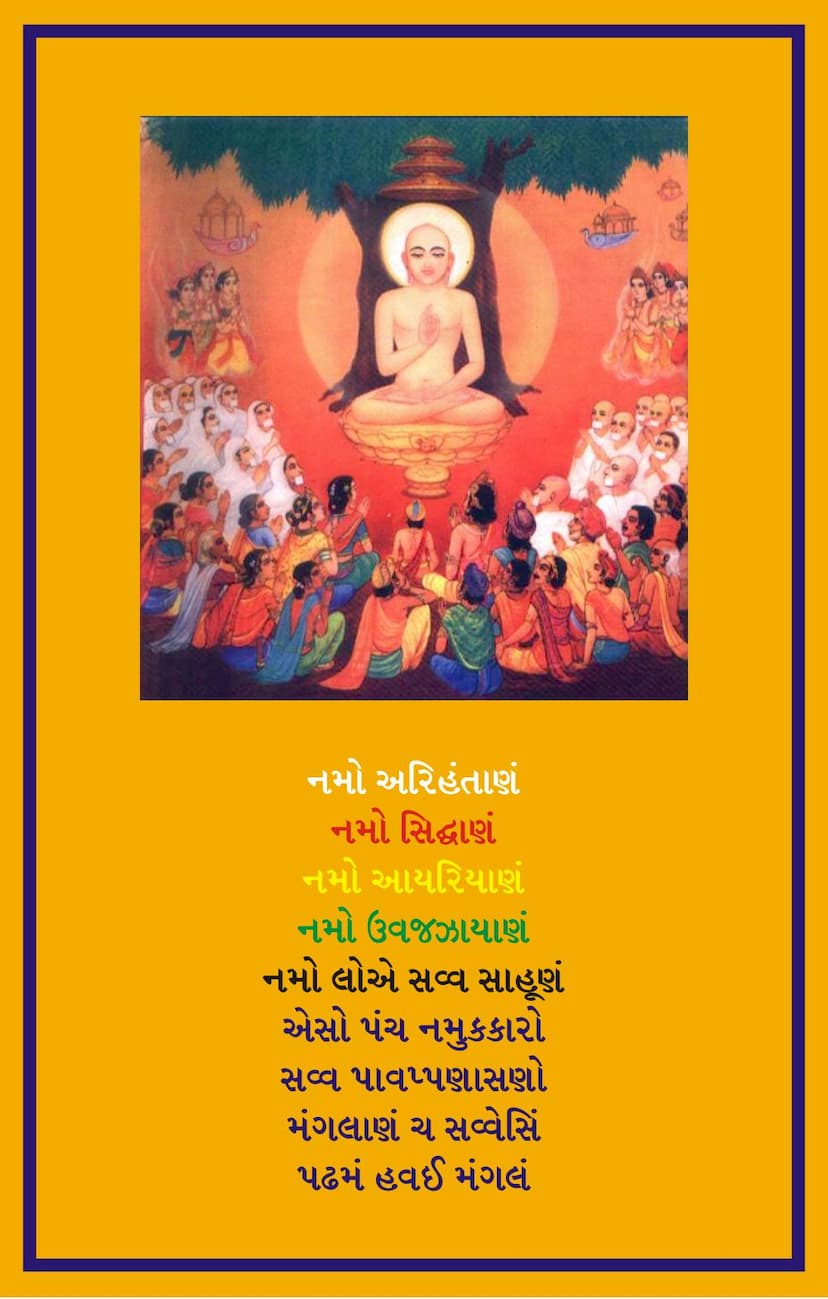Agam 13 Upang 02 Rajprashniya Sutra Part 02 Sthanakvasi Gujarati
Added to library: September 1, 2025

Summary
Based on the provided text, here's a comprehensive summary of the Rajprashniya Sutra Part 2, focusing on its content and context:
Book Title: Agam 13 Upang 02 Rajprashniya Sutra Part 02 Author: Ghasilal Maharaj Publisher: A B Shwetambar Sthanakvasi Jain Shastroddhar Samiti
This text is the second part of the Rajprashniya Sutra, a significant Jain scripture, as interpreted and explained by Ghasilal Maharaj. It is published by the Akhil Bharat Shwetambar Sthanakvasi Jain Shastroddhara Samiti. The text itself is in Gujarati, with a Hindi translation and commentary provided. The catalog link confirms its presence in the JainQQ.org collection.
The core of the provided text appears to be a detailed exposition of the "Rajprashniya Sutra," which is a dialogue or inquiry concerning the actions and past lives of individuals, particularly focusing on a character named Suryabhedeva (or Suryabhadeva) and his attainments. The text also introduces Pradeshi, a king known for his unrighteousness, and his interactions with the Jain monk Keshikumara Shraman.
Key Themes and Content Identified:
-
The Narrative Focus: The primary narrative revolves around questions posed by Gautam Swami to Lord Mahavir regarding Suryabhedeva's divine powers and past life. Lord Mahavir then elaborates on the past life of Suryabhedeva, revealing him to be Pradeshi Raja.
-
Pradeshi Raja's Character and Unrighteousness: The text extensively details Pradeshi Raja's characteristics and actions. He is depicted as a king who, despite his immense strength and royal status, is deeply immersed in adharma (unrighteousness). His reign is characterized by violence, cruelty, indulgence in vices like bribery and deceit, and a lack of respect for elders and societal norms. He is described as being driven by negative impulses and promoting an unrighteous lifestyle among his subjects.
-
The Role of Chitra Sarathi: Chitra, Pradeshi Raja's charioteer, is portrayed as a wise and influential figure. He is depicted as being skilled in various aspects of governance and counsel, even being permitted entry into the royal harem. Chitra acts as an intermediary and facilitator in many events.
-
Encounter with Keshikumara Shraman: The narrative shifts to the arrival of Keshikumara Shraman, a disciple of Lord Parshvanatha, in Shravasti. Chitra Sarathi witnesses the growing respect and devotion of the people towards Keshikumara Shraman. This prompts him to seek knowledge from the monk, leading to a significant turning point.
-
The Concept of Righteousness and Dharma: Through the interactions between Pradeshi Raja and Keshikumara Shraman, the text explores the nature of righteousness (dharma) and unrighteousness (adharma). Keshikumara Shraman attempts to guide Pradeshi Raja towards the Jain path, emphasizing the importance of ethical conduct, detachment, and spiritual knowledge.
-
The Discussion on Soul and Body: A significant portion of the text is dedicated to a philosophical debate between Pradeshi Raja and Keshikumara Shraman on the distinction between the soul (jiva) and the body (sharira).
- Pradeshi Raja's Argument for Union: Pradeshi Raja initially struggles with the concept of a separate soul and body, arguing that since he cannot perceive the soul within the body, and observed that a dead body showed no quantitative change in weight, he believes the soul and body are one. He uses analogies like the iron heated in fire or the sound from a drum to illustrate his point, suggesting that if something exists, it should be perceivable or have a demonstrable cause. He also uses his observations of the unchanging weight of a corpse after death as evidence for the soul's absence.
- Keshikumara Shraman's Refutation: Keshikumara Shraman uses various analogies to explain the soul's separateness from the body and its subtle nature. He explains that just as the heat of fire is not the iron itself, the soul is not the body. He uses examples like the penetrating power of sound, the growth of plants, the movement of wind, and the existence of subtle entities like Dharma and Adharma Tattva to illustrate that not everything perceivable is physical or directly observable in the way physical objects are. He further explains the different types of knowledge (mati, shruta, avadhi, manahparyaya, kevala) to show the limitations of ordinary perception. The debate highlights Keshikumara Shraman's profound spiritual knowledge and Pradeshi Raja's gradual intellectual understanding.
-
Pradeshi Raja's Transformation: Despite his initial resistance and skepticism, Pradeshi Raja is eventually convinced by Keshikumara Shraman's teachings. He accepts the principles of the Jain dharma and embraces the path of a lay follower (shravaka), taking vows. This signifies a transformation from an unrighteous ruler to a devotee.
-
The Story of Suryabhedeva's Future Life: The narrative concludes with the understanding that Pradeshi Raja, after his death, will be reborn as Suryabhedeva in a celestial realm (devaloka) with immense divine powers and enjoy a long lifespan before his eventual liberation.
-
The Significance of Austerity and Ethical Conduct: The text emphasizes the Jain principles of non-violence (ahimsa), truthfulness (satya), non-stealing (asteya), chastity (brahmacharya), and non-possession (aparigraha) through the teachings of Keshikumara Shraman and the transformation of Pradeshi Raja. The importance of performing one's duties with righteousness and the consequences of unrighteous actions are also highlighted.
Contextual Information:
- The text is part of a larger series of Jain Agamas, suggesting its importance within Jain scripture.
- The commentary by Ghasilal Maharaj aims to make the profound teachings of the Rajprashniya Sutra accessible.
- The inclusion of specific rules for studying the sutra (like avoiding study during certain times or in the presence of menstruating women, and specific periods of non-study called 'asvadhyaya') highlights the reverence and discipline associated with studying sacred texts in Jainism.
In essence, this part of the Rajprashniya Sutra serves as a narrative vehicle to explain fundamental Jain philosophical concepts, particularly the nature of the soul, karma, and the path to liberation, through the engaging story of a king's encounter with a wise monk.